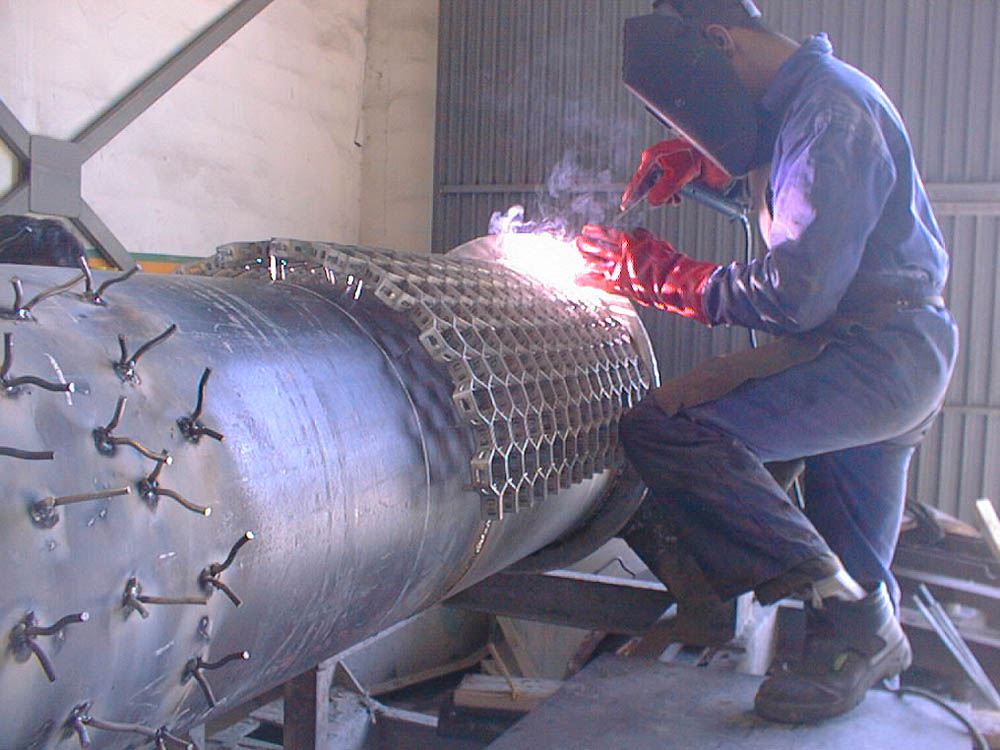Introduction to refractory materials
ABSTRACT
The present article represents an introduction to the world of refractory materials, exposing the main definitions, classifications and uses on the main sectors of application.
INTRODUCTION
Refractory materials are in general relatively unknown by general public, industry and related technical studies, despite the fact that many refractories have been used since long time ago and are developed on very advanced technological innovations. Besides, existing bibliography is scarce and does not go into detail on the continuous research and development of new materials, their applications and industrial experiences.
As a matter of fact, their knowledge is vital for a vast majority of industrial processes, as most of the products we daily use require refractory products for their manufacture, directly or indirectly when producing their respective raw materials or components.

SECTORS OF APPLICATION
• Integral steel production industry : blast furnaces, heaters, cok furnaces sets, cast iron mixers, ladle cranes, train cars, electrical furnaces.
• Steel industry: electrical furnaces, converters, ladles, troughs, de-gasification furnaces, heat treatment and refine furnaces, push and moving beams rolling furnaces.
• Glass industry: melting furnaces for hollow and flat glass, tin baths, annealing furnaces.
• Metals industry: copper melting furnaces, aluminium furnaces, anode cooking furnaces, pyrite roasing furnaces, lead furnaces, melting towers.
• Cement industry: rotary kilns, heat exchangers, kiln hoods, grate and satellite coolers.
• Waste: grate incineration furnaces, fluidised bed furnaces for urban and industrial waste, combustion chambers.
• Ceramics industry: tunnel kilns, chamber kilns, wagons.
• Petrochemical industry: petrol furnaces, ethane furnaces and related processes, boilers, cracking furnaces.
• Chimneys.
• Various industries: vertical shaft kilns, sugar dryers, hot gas generators for power stations, arch furnaces for foundries, vertical kilns for lime, rotary kilns for paper sectors, sinterisation kilns.
In other words, without refractories it would be virtually impossible to fabricate steel, cement, glass, ceramics, gasoline, non-ferrous metals, lime or such daily products as sugar. Therefore we can conclude that this is an strategic sector, as it is essential for the good operation of many more.
In terms of volumes, their applications may range from a few kilograms required for small furnaces up to many thousands of tons installed in big units. Their installation is a highly technical job, specially due to the qualification and experience required by the operators and installation companies. As opposed to civil brickwork where the required skills are relatively simple, the erection of refractory linings for processes working over 1000C, subject to high mechanical, thermal and chemical demand require methodical preparation and excellence at execution.
But what is a refractory material ? How can we define it ? Where are its limits or, in other words, which are the parametres in where a material can be considered as refractory?
DEFINITIONS & CLASSIFICATIONS
In practice, a refractory material can be defined as one which can resist high temperatures without deterioration of properties, both physical and chemical, as well as the conditions of the process where it operates, for such a long period of time to result economically profitable. Refractory materials can be classified according to several criteria:
- By its chemical character:
Indicates the reactive character of the material (acid, neutral or basic), its behaviour against high temperature and the slags and baths it presents chemical reactions with. - By its chemical composition:
Depending on the percentages of constituents and additives, groups and subgrous are established : silica systems, silica-alumina systems, alumina systems, based on magnesium oxide, etc., with additions of carbon, zircon, silicon carbide, etc., as well as combinations of these and special formulations. - By its chemical nature:
Classification valid for research and development of new products. The vast majority of materials are composed by oxides. - By its shape:
This is the most intuitive and obvious for the end user, and it’s employed on the development of detailed refractory engineering for any unit. It divides materials into shaped (bricks and pre-cast blocks) and unshaped (concretes/castables and various materials like insulating ceramic fiber products). - By its purpose:
It classifies materials in dense products, exposed to the industrial process, and insulating materials, whose mission is to retain the heat inside the unit to reduce the fuels consumption as well as to protect the metallic casing of the unit from high temperatures.
Bibliography
Técnica Industrial. Ricardo Inoriza Telleria.
Refractory Engineering. Deutsche Gesellschaft und Schornsteinbau e.V. Vulkan Verlag. Essen.
Feuerfeste Wekstoffe und Ihre Merkmale. Didier Werke AG. Wiesbaden.
COMPARTE ESTE ARTÍCULO EN TUS REDES SOCIALES
COMPARTE ESTE ARTÍCULO EN TUS REDES SOCIALES
Merry Christmas and Happy New Year 2022
Artículos



